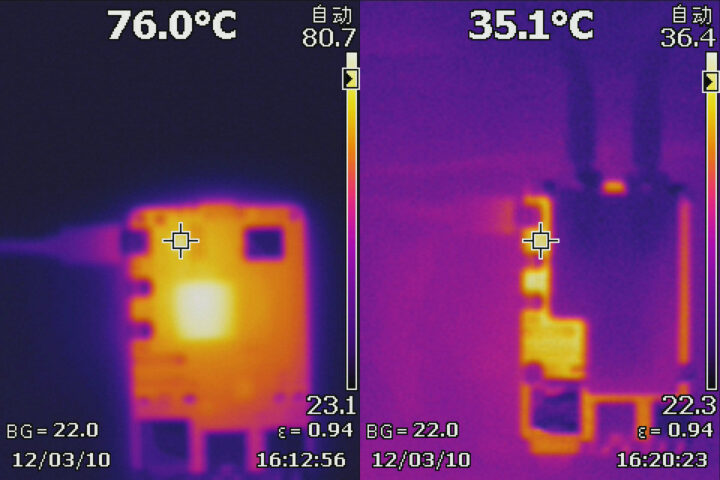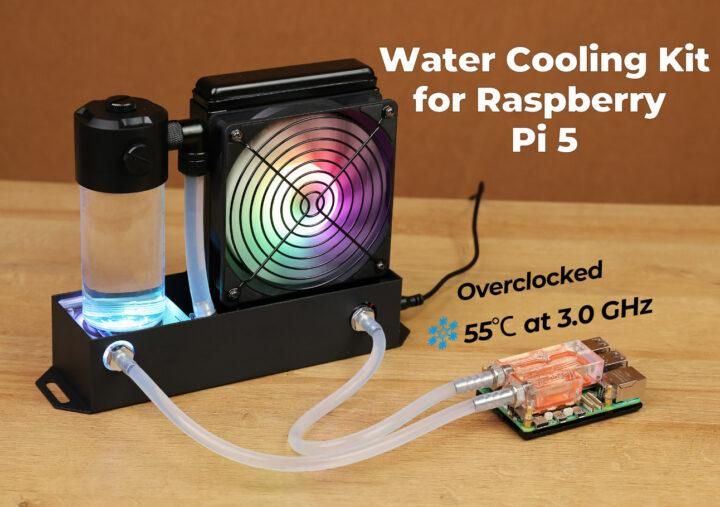If you like fancy, but somewhat expensive and useless things, 52Pi’s water cooling kit for Raspberry Pi 5 SBC may be right up your alley and the over-engineered cooling solution sells for $120 on Seeed Studio where we discovered the kit.
We’ve already seen the active cooler and official case do a decent job at cooling the Raspberry Pi 5, but several companies have also launched fanless cases for the latest Pi single board computer. Water cooling may only make sense when attempting to overclock the Raspberry Pi 5, and 52Pi claims the Broadcom BCM2712 processor can run a 3.0 GHz at a relatively cool temperature of 55°C.
52Pi water cooling kit content:
- Main water cooling unit with RGB LED fan, water tank, and base
- Water cooling radiator (that’s the orange thing on top of the Raspberry Pi)
- Black heatsink
- 2x Silicone hoses
- 12V/2A power adapter (US)
- 4x M2.5*10 hexagonal screws
- L-key hex wrench

Besides the CPU temperature going only up to 55°C at 3.0 GHz, the temperature is said to hover around 37°C under full load at the stock 2.4 GHz frequency. I could not find mounting and usage instructions on Seeed Studio or the 52Pi website at the time of writing, but Leepsvideo got a unit, and you can learn how to assemble it from his video review.
It’s not the first silly cooling solution from 52Pi, as we previously reviewed the 52Pi ICE Tower cooling fan for the Raspberry Pi 4.

Jean-Luc started CNX Software in 2010 as a part-time endeavor, before quitting his job as a software engineering manager, and starting to write daily news, and reviews full time later in 2011.
Support CNX Software! Donate via cryptocurrencies, become a Patron on Patreon, or purchase goods on Amazon or Aliexpress





